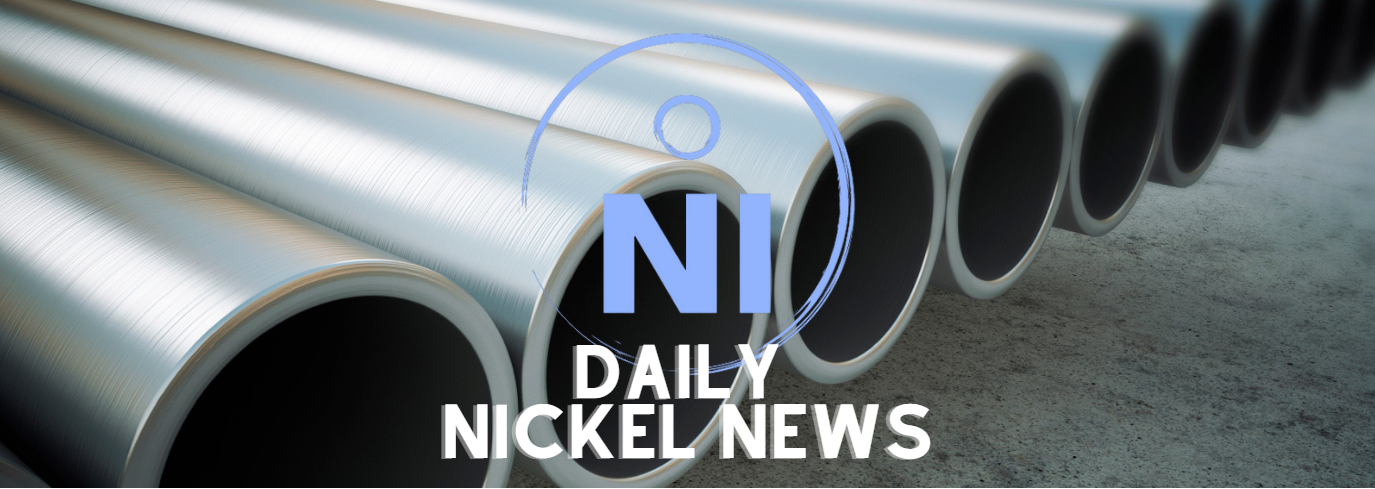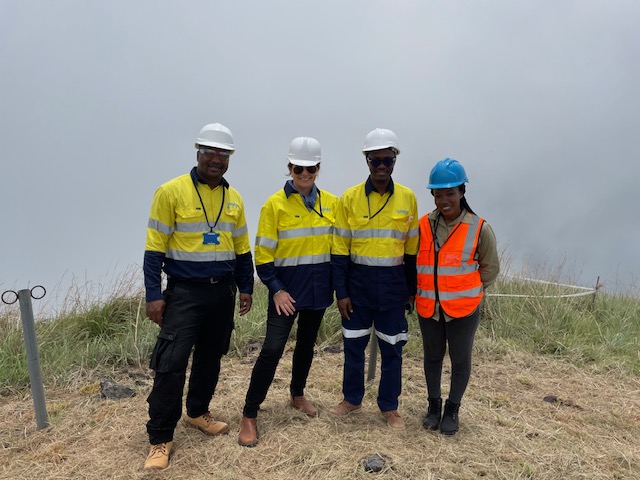- Resources stock picker Rusty Delroy says the time to deploy capital on unloved mining stocks is now
- Why the G in ESG should be replaced with an F for ‘friendly’
- Why NIC, MGX, MLX, DLI and WR1 have the Nero Resource Fund’s attention
Michael Burry, the contrarian hedge fund manager who won big betting against the US housing market, is better known in the public consciousness for Christian Bale’s combustible and aloof impression of the bubble picker in The Big Short.
His penchant for the drums — famously depicted in the Adam McKay comedy — is shared with mulleted Aussie stock picker Rusty Delroy, whose strategy with the Cottesloe-based Nero Resource Fund is also predicated on cutting against the grain.
He says metals and mining juniors have been stuck in a rut of a market for the past 18 months, but counter-intuitively, that makes it a great time to deploy capital.
Fresh off a win on the cash sale of Lithium Power International to Chile’s Codelco, Nero is holding upwards of $150m of funds under management and in excess of $30m in cash.
But it is looking to run a new funding round at some point this year in a bid to capture the hidden value at the bottom of the market.
“It’s safe to say there’s a lot of compelling places to put your capital to work at the moment and by that I mean valuations are low and we’re trading into cost curves across a range of commodities,” he told Stockhead.
“Which is when you want to be deploying capital. It won’t feel like it, your stomach will churn but it is when you want to be busy.”
Playing the nickel market: Environmental, Social and … Friendly?
Let’s start with the metal on everyone’s lips and not for the right reasons.
Australia is staring down the barrel of thousands of job losses with the effective closure of its nickel industry — including BHP’s (ASX:BHP) Nickel West division, the jewel in the crown dating back to the commodity’s discovery in Kambalda in 1966.
That’s brought what many market watchers view as a knee-jerk reaction — the placement of nickel on the critical minerals list to open access to Canberra finance and a halving of royalty payments for the next 18 months from the WA Government.
It’s all come about because of a flood of supply from Indonesia, using processing methods developed primarily by Chinese companies including the world’s largest stainless steel producer Tsingshan.
“One, I appreciate the government are paying attention to the issue and the sector. I think it’s far broader than nickel. And I think nickel has its own dynamics, which are incredibly important to recognise in that there is a structural shift in the supply of nickel, and the cost of that supply,” Delroy said.
“The underlying issue though, around the need for metal market bifurcation, is pertinent for nickel and pretty much every other commodity out there. But the sort of reaction that the government has had is a Band-Aid on a war wound.
“You need to prevent the wound in the first place. It’s not going to fix what is the underlying problem.”
He says the big aim should be developing a separate commodities exchange where miners producing under more stringent environmental regulations can sell metal outside of China’s immediate sphere of influence.
Does that mean ESG? Not to Delroy, who calls it a ‘f****** stupid acronym’.
He replaces the G with F … for friendly.
“Running a business well is good governance, it’s just 101, it shouldn’t even be up in lights. So, it really is ESF to me,” he said.
“Environmental, social, and friendly. And the friendly component is the big geo-strategic imperative for the next 20 or 30 years.
“It’s more important to governments and decarbonisation, and they won’t come out and necessarily admit that but it is a fundamental truth.”
With that in mind, his nickel pick may come as a surprise. While Australian nickel producers have been crying poor and running to authorities for support, Nickel Industries (ASX:NIC) bucked the trend by announcing a 20% dividend lift and a new US$100 million buyback — collective returns to shareholders in excess of $250m.
The ~$3b capped nickel upstart comes with some wrinkles. Its largest shareholder is Tsingshan subsidiary Shanghai Decent, whose RKEF, nickel matte and HPAL technology has helped make NIC one of the largest and lowest cost primary nickel producers in the market.
But China has the best metals processing IP in the world, and Delroy says Nickel Industries currently offers the best of both worlds when it comes to his take on its ‘ESF’ metrics.
“It’s not a case of just going out turn the capital on and we’ll just build it, because we don’t even know what we’re doing. China is so dominant and has been that way for so long,” he said.
“We got rid of all these industries 30 years ago, we don’t know how to do them efficiently or effectively.
“If you look at lithium processing, rare earth processing, nickel processing, arguably it probably extends to copper. If you want to do that best in class, guess where you’re going to need to encourage to come to your backyard and build the kit.
“The West actually has to admit we aren’t superior. We’re actually behind here and that’s a really hard thing psychologically, to do. The newspapers won’t do it. The government won’t do it.
“The narrative is ‘China cheats’. ‘It copies, it pollutes, it produces s*** product for a cheaper price’ – that’s garbage. They are producing efficiently and effectively with technology and we actually need, ironically, to encourage them to come to our friendly shores.”
How does Nickel Industries fit into this? Delroy says they serve as a model by taking Australian capital and environmental standards to the best orebodies with China’s processing nous in tow.
“In the case of Nickel Industries, it’s a really interesting example because they are leading the Indonesian nickel sector on environmental and social outcomes and arguably even on the F because they’re not China owned — they’re part owned,” he said.
Where can you find small producers worth a dime?
While Nickel Industries is at the bigger end of the market, a couple of small producers have caught Delroy’s attention.
Most single mine operators have been in struggle town in the past year, with inflationary pressures more pronounced on smaller mines with lower economies of scale and less desirable geological characteristics than those operated by the majors.
Smaller mid-tier companies like 29Metals (ASX:29M), Panoramic Resources (ASX:PAN), Aurelia Metals (ASX:AMI) and Aeris Resources (ASX:AIS) who are reliant on only one or two mines have been among those who have struggled to gain traction.
“All of these sort of smaller producers have had a torrid, torrid run and you don’t want to be anywhere near the majority of them,” he said.
“But there is the odd name that is actually in a bit of a sweet spot and you can own at the right price.”
Delroy likes Mt Gibson Iron (ASX:MGX) and Metals X (ASX:MLX), both strongly supported by Hong Kong resources investor APAC.
$620m capped MGX owns the super-high grade Koolan Island iron ore mine in WA, where it generated $123 million of cash flow in the December quarter, finally bearing fruit after an extended period of pre-stripping to expose its premium priced 65% Fe reserves.
“The free cash flow generation there, you only have to wait another year or something and you’ll probably be fully underwritten with cash. So that’s in printing mode,” Delroy said.
In terms of Metals X, half-owner of the historic Renison Bell tin mine in Tasmania, he says the under the radar energy metal is an ‘incredibly compelling place to be’.
“It’s almost impossible to find tin assets globally. Again, they’re on pretty good free cash. They continue to accumulate that cash,” he said.
“And there’s a chance you might get a distribution at some stage or, if tin does continue to move higher, I think you might you might see them start to really prioritise the development of Rentails (a tailings reclamation project), which is a good environmental outcome for the site and an important supplier of tin long term.
“I like hunting in these markets but you’ve really got to pick the eyes out.”
Finding value in lithium stocks
Among the most sold off parts of the market are the lithium stocks which propped up the otherwise moribund junior resources sector in 2023.
Prices have now collapsed from over US$80,000/t for chemicals to around US$14,000/t, while the 6% Li2O spodumene concentrate made at WA’s hard rock mines is fetching US$850/t, down from over US$8000/t in late 2022.
Delroy said it’s the wrong time of the cycle to be into producers.
“This is that ugly bottoming process where you’ve got to disincentivise a few players and you just don’t want to be the one to break first,” he said.
“If you could find producers that are at the right end of the cost curve that were cheap enough, buy them all day long, but I’d like to see Pilbara Minerals (ASX:PLS) and MinRes (ASX:MIN) a bit cheaper.
“I think the implied lithium price in Pilbara is kind of a fair one, but I don’t really want to pay fair when I’m at the bottom of the cycle. I want to be getting something on special.”
The two names Delroy has come back to are MinRes backed Delta Lithium (ASX:DLI), which controls around 40Mt of spodumene resources in WA, and Canadian explorer Winsome Resources (ASX:WR1).
“I still think this is gonna be a very choppy, difficult year for lith with the physical pricing. But you do want to be hunting some things that are beaten up,” he said.
“Delta is not an A-Grade asset. It’s like a C-Grade asset suite but there’s strategic interest there.
“And $100-odd million at bank, probably compelling at some point for MinRes to wrap it back up with some paper and take the cash back. I’m sure their balance sheet could do with that.”
Delroy rates ~$150 million capped Winsome ahead of the $1.62 billion capped Patriot Battery Metals (ASX:PMT), which has drawn the most excitement from punters in Canada’s crowded James Bay lithium scene.
Winsome posted an initial resource in December of 59Mt at 1.12% Li2O at its Adina deposit last year, with a further update expected in the first half of 2024.
“That’s a quality asset that’s going to continue to grow,” Delroy believes.
“It’s a next cycle asset at best. It’s still got a journey, but it is a proper asset and it’s far more compelling from a valuation standpoint than something like a Patriot.
And it’s also, I think, got a far shorter path to market than Patriot. I think there’s a more credible permitting process with Winsome.”
Rusty Delroy’s mining picks share prices today
The post He’s playing to the beat of his own drum and the people’s fundie Rusty Delroy says the time to deploy capital in mining is now appeared first on Stockhead.



